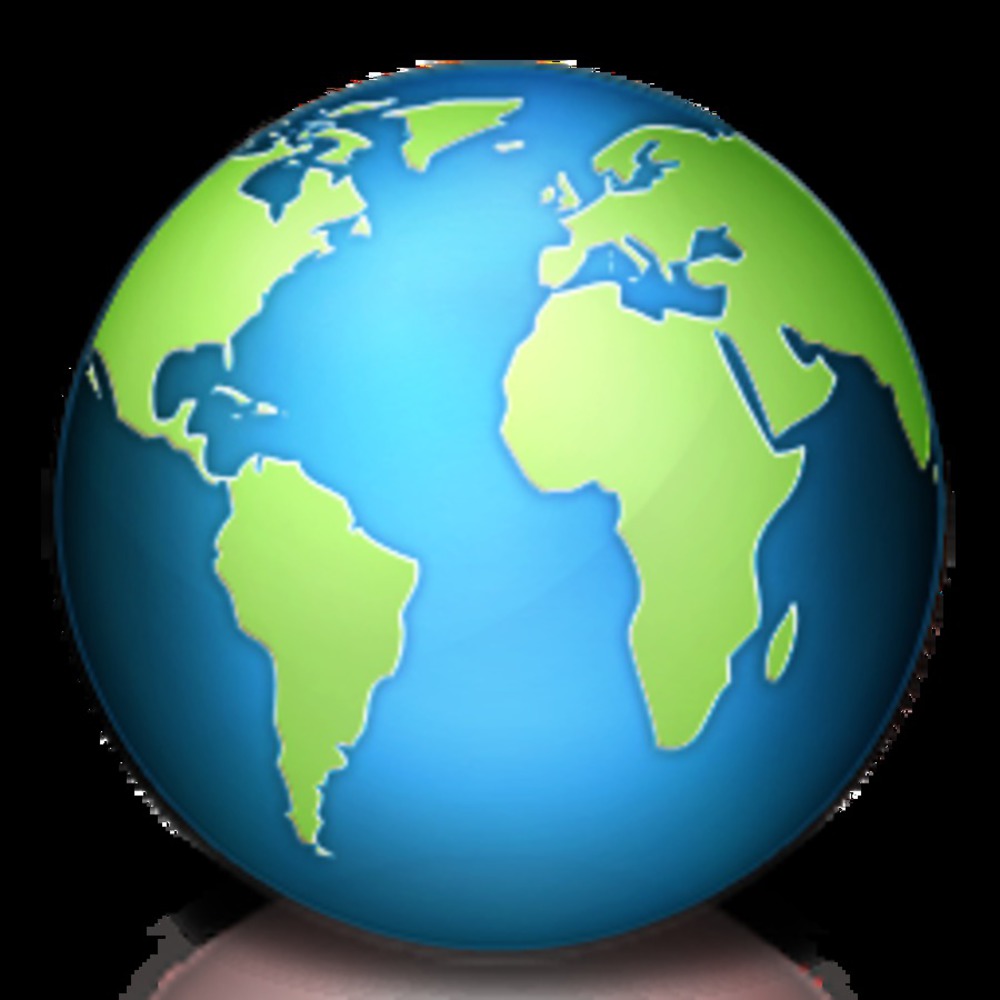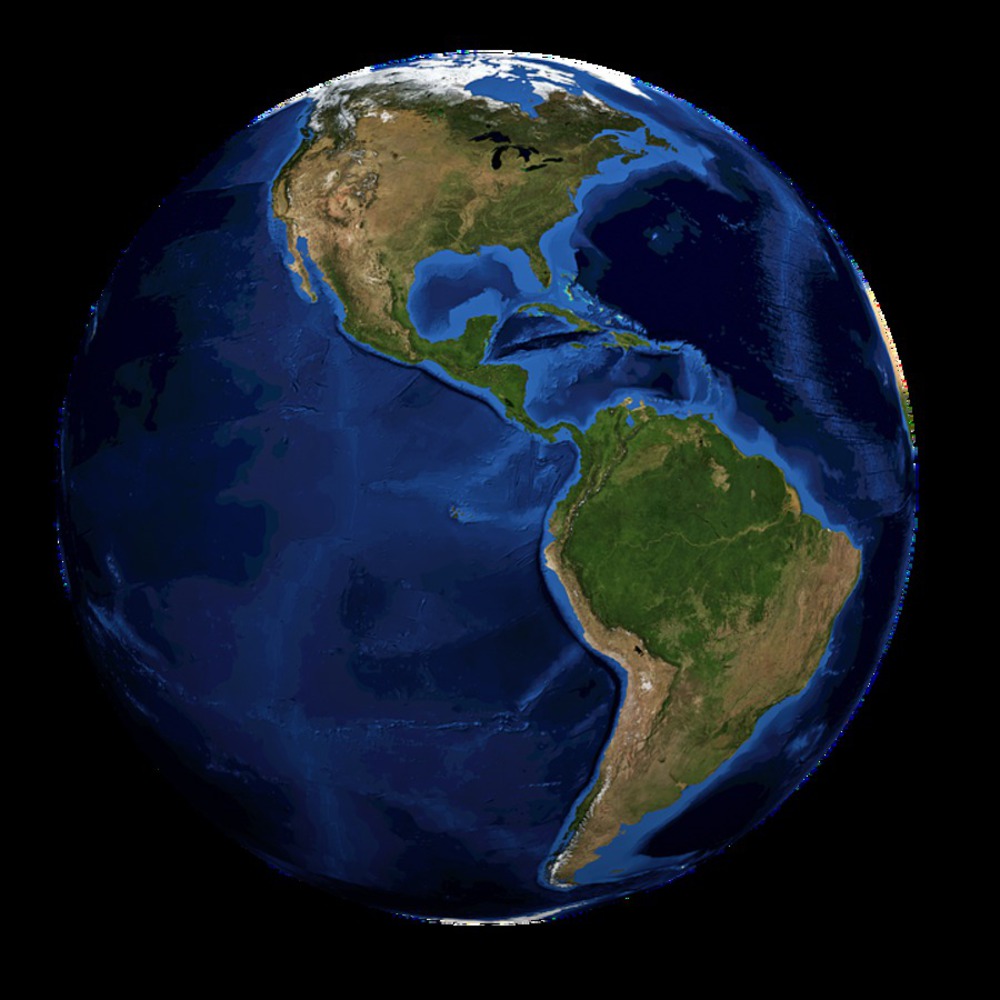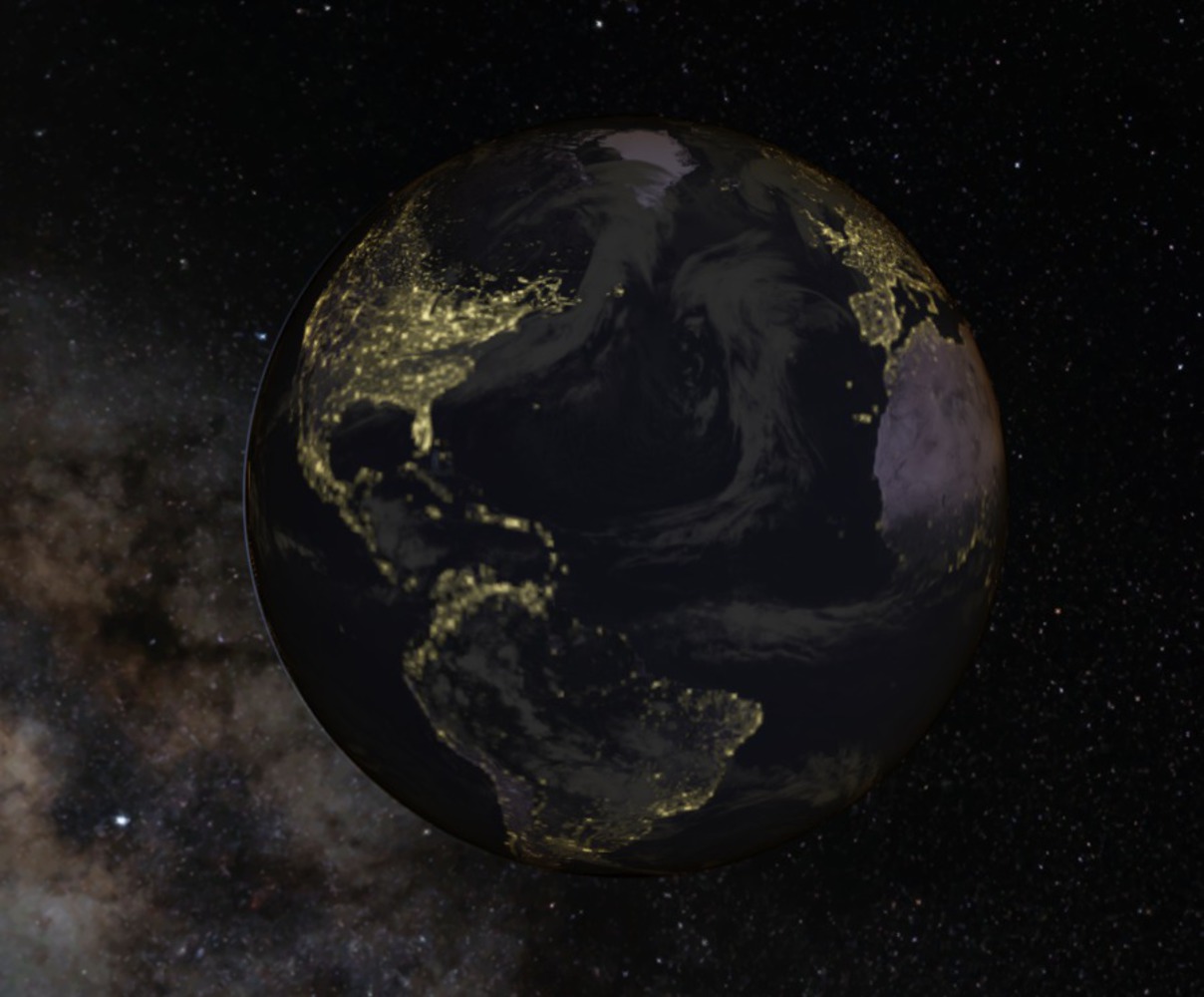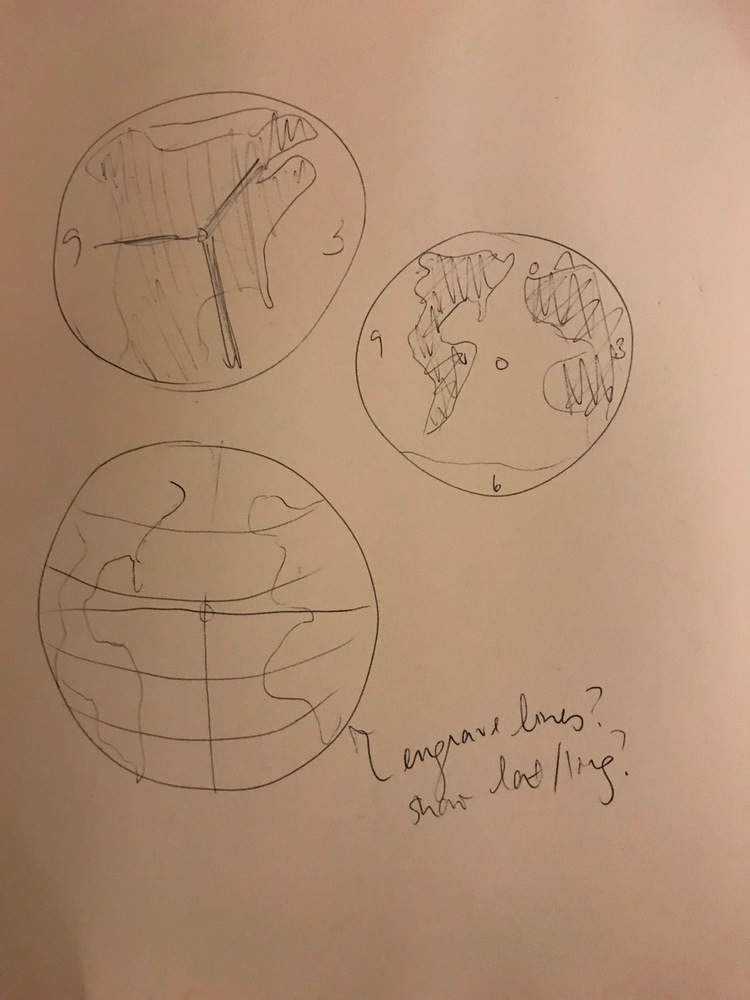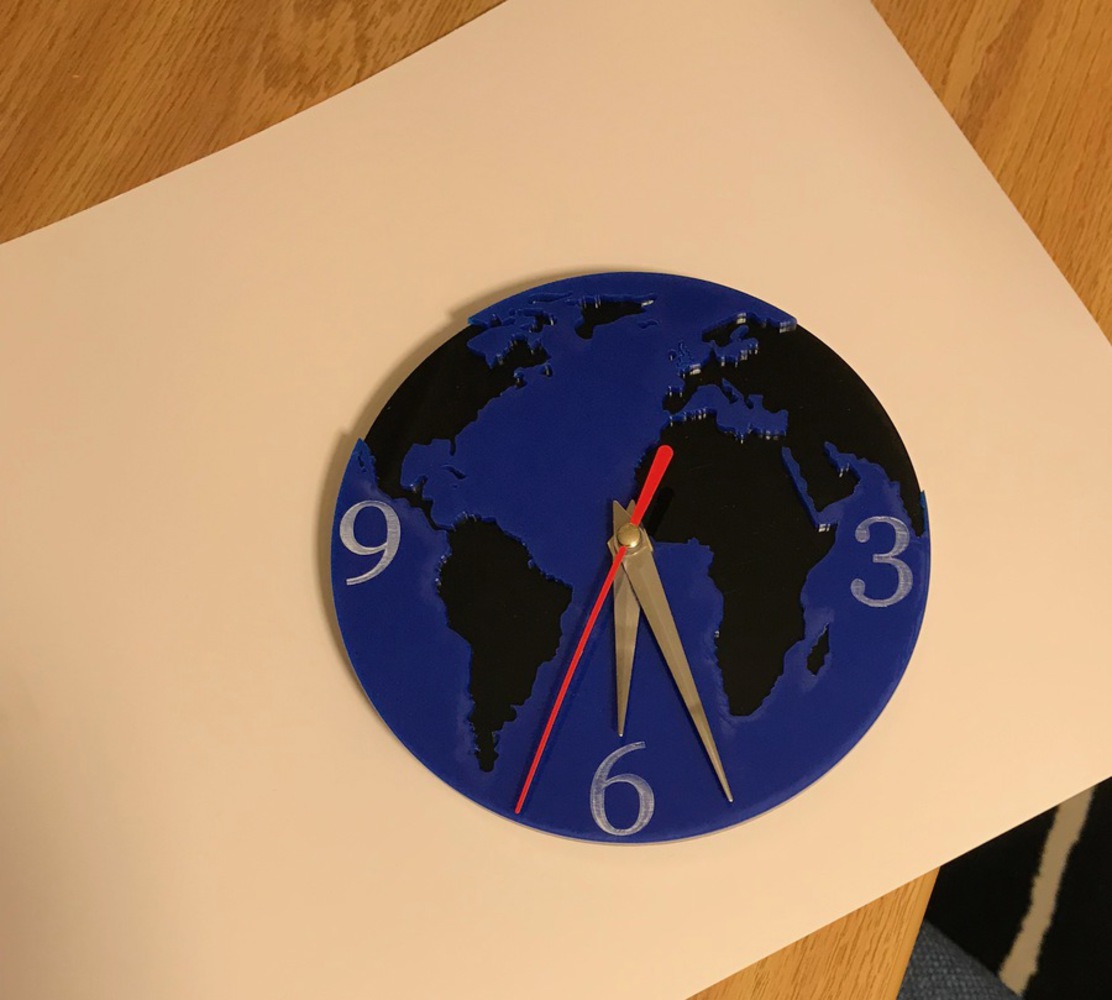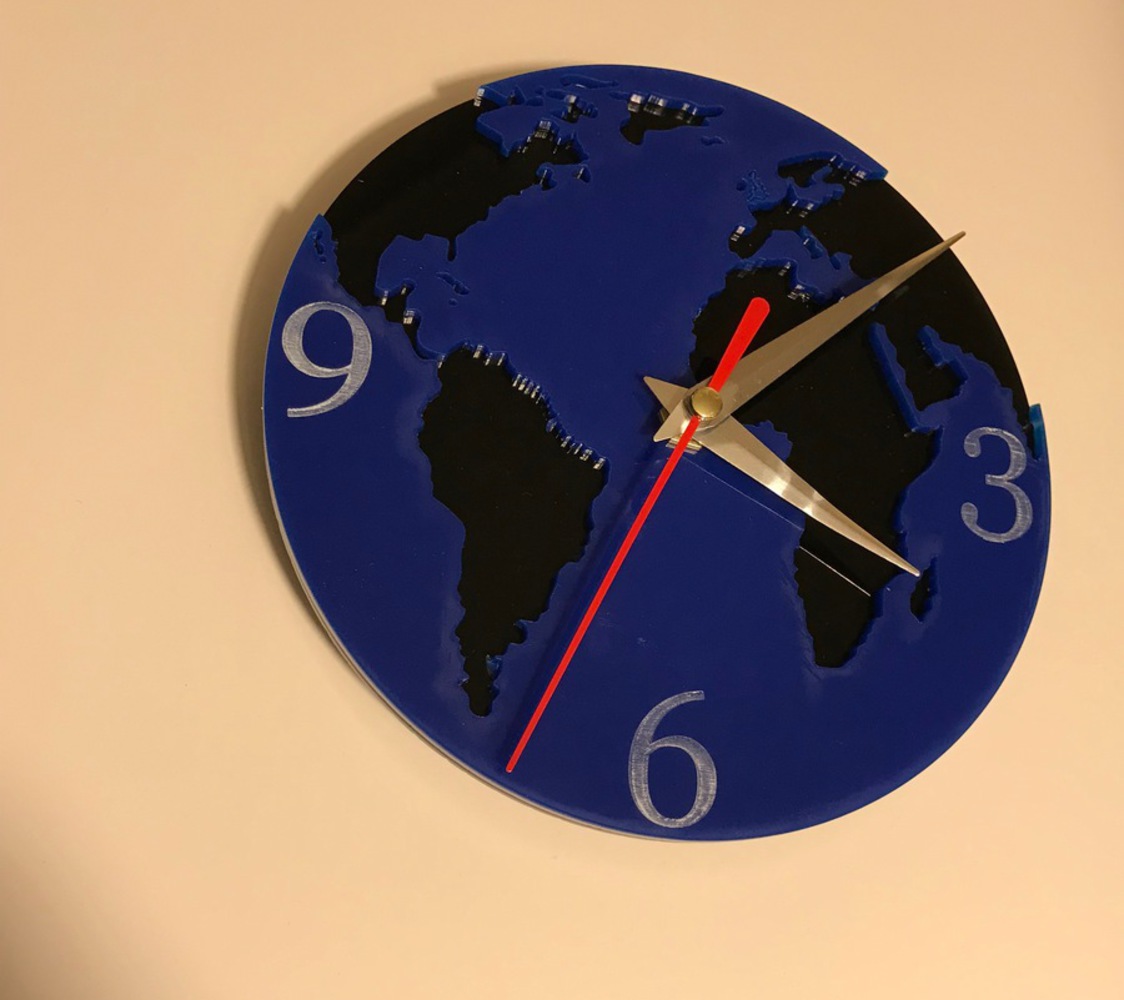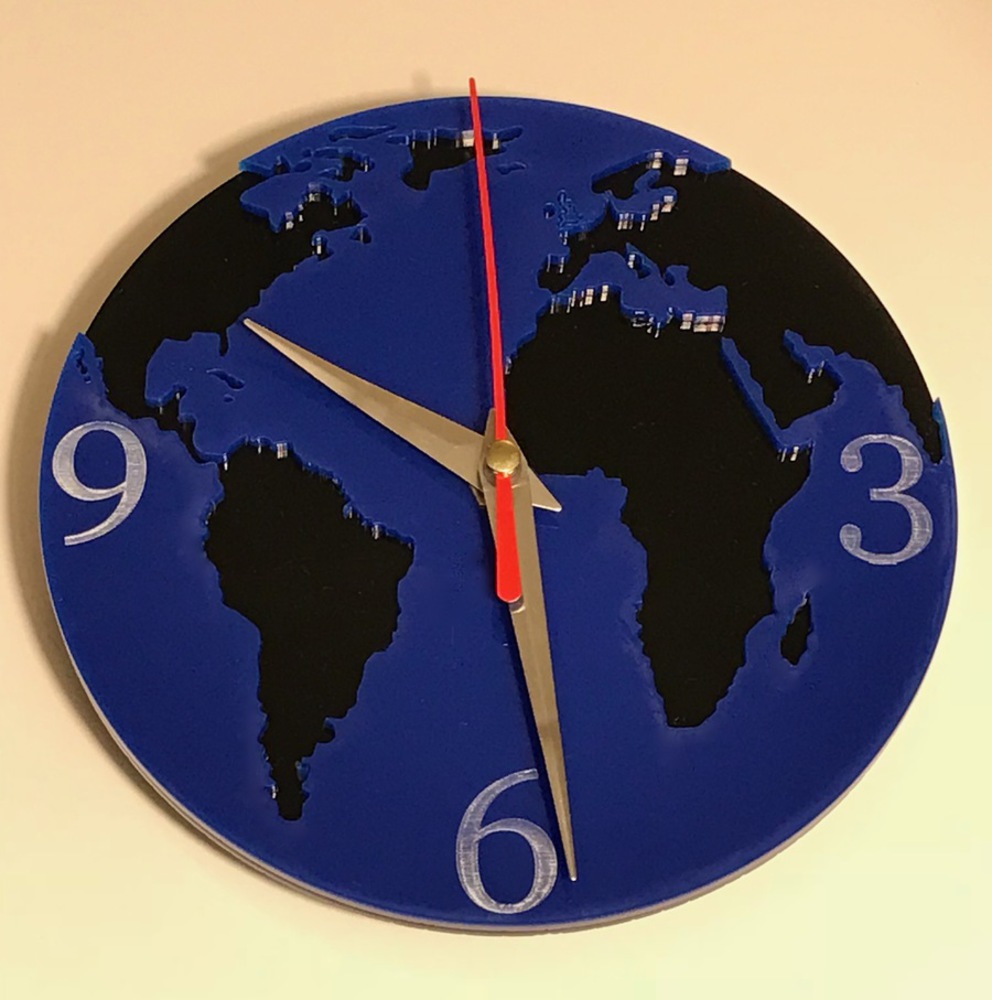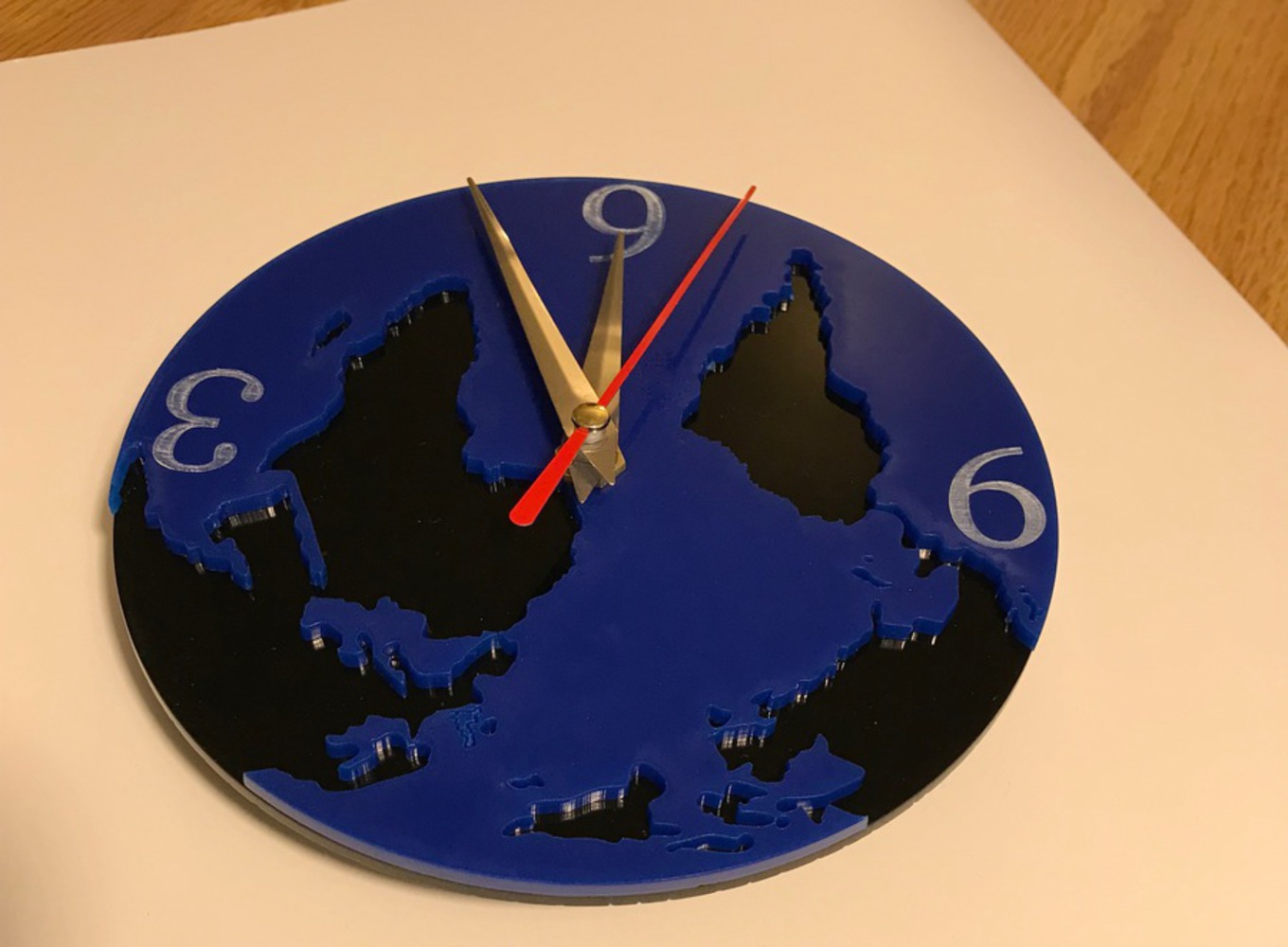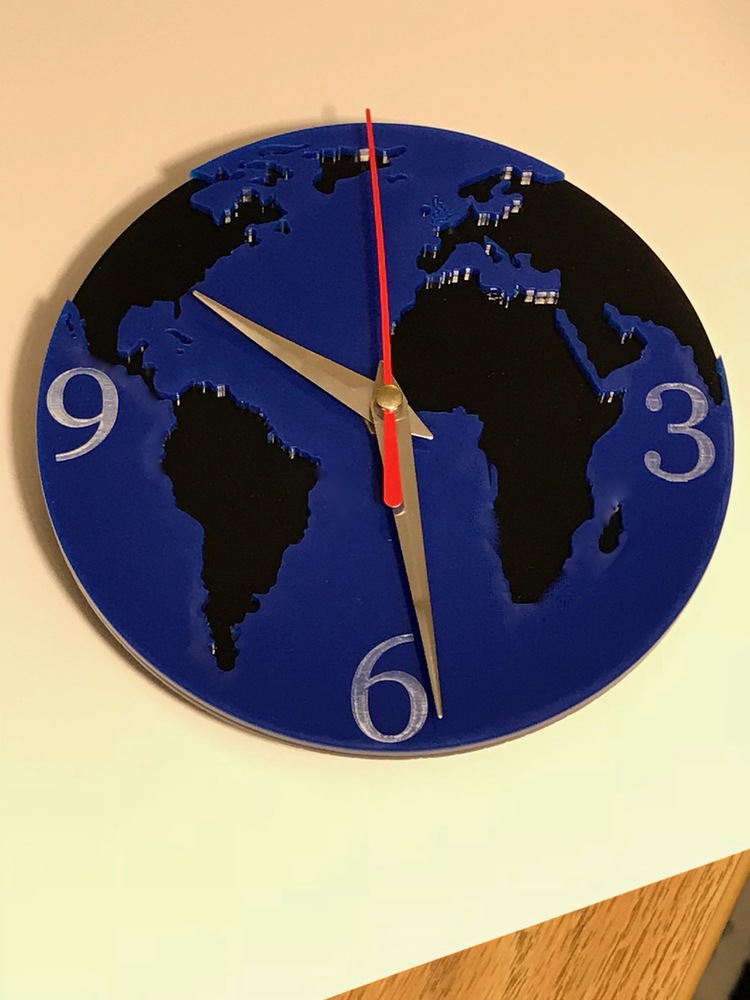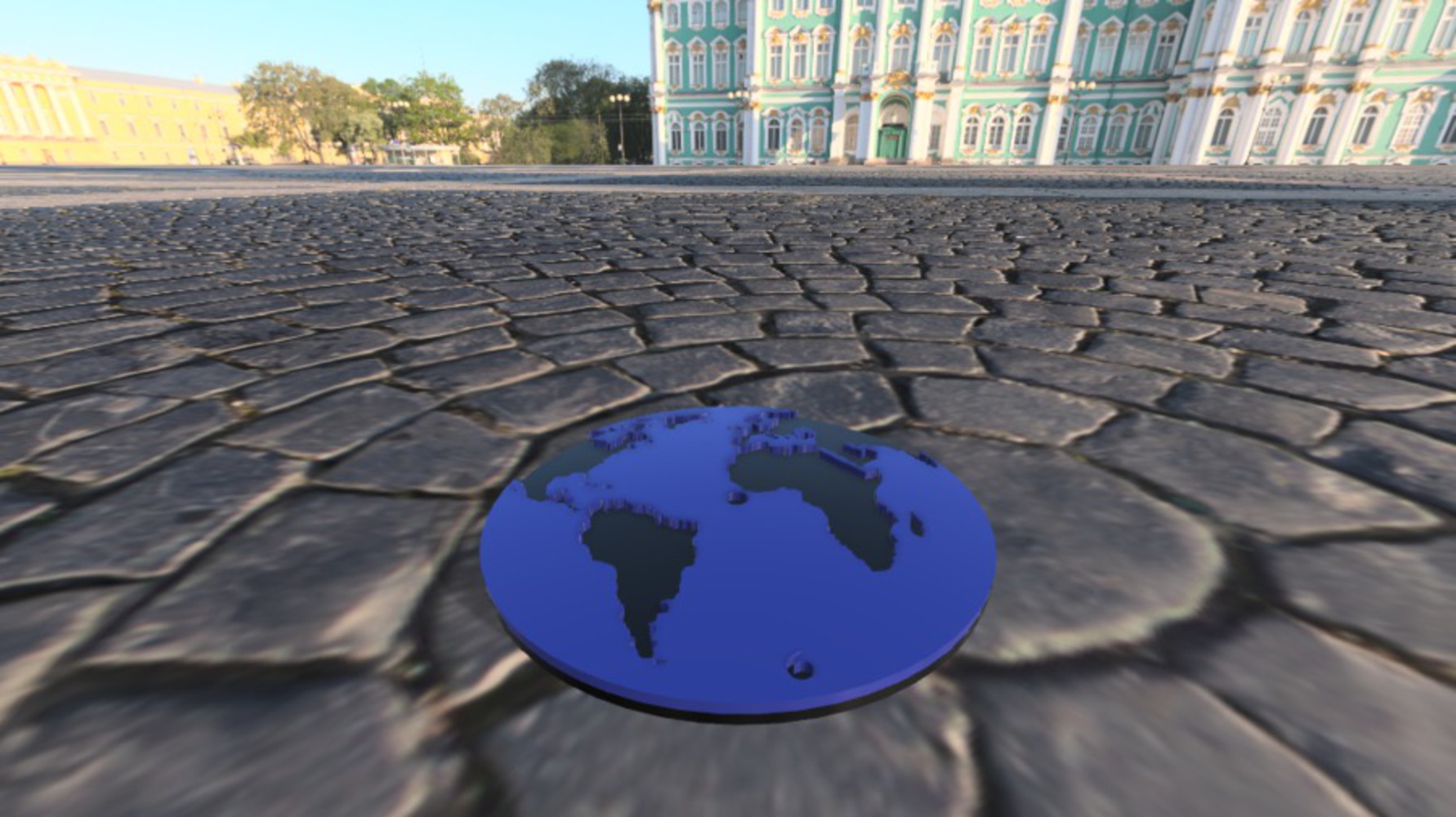Process + Procedure
I first drew out a few different views of the earth by hand. These were very rough and not very descriptive of the aesthetic that I was going for.
Next I imported an image canvas to Autodesk Fusion 360 and used that image to trace out the world within a circle. I measured out the second hand of the clock kit that I received and used that length as my radius. I liked the idea of the hands reaching to the edge of the clock. I feel that up close, it makes the clock seem fuller. I used the spline tool to do most of my tracing and rendered the clock to get an idea of what the final product would look like.
After taking my digital sketch and converting it to a DXF file, I began to cut the clock. I first used a scaled down version of my design and tested it on cardboard. After liking how it looked, I moved onto acrylic, where I failed to make a full cut twice before finally cutting and etching my clock on blue acrylic. I was able to cut the black base of the clock on my first try.
Unfortunately, I lost the acrylic with the failed cuts on them before I was able to take a picture :( I didn't realize at the time that it would be a valuable part of my documentation process.
